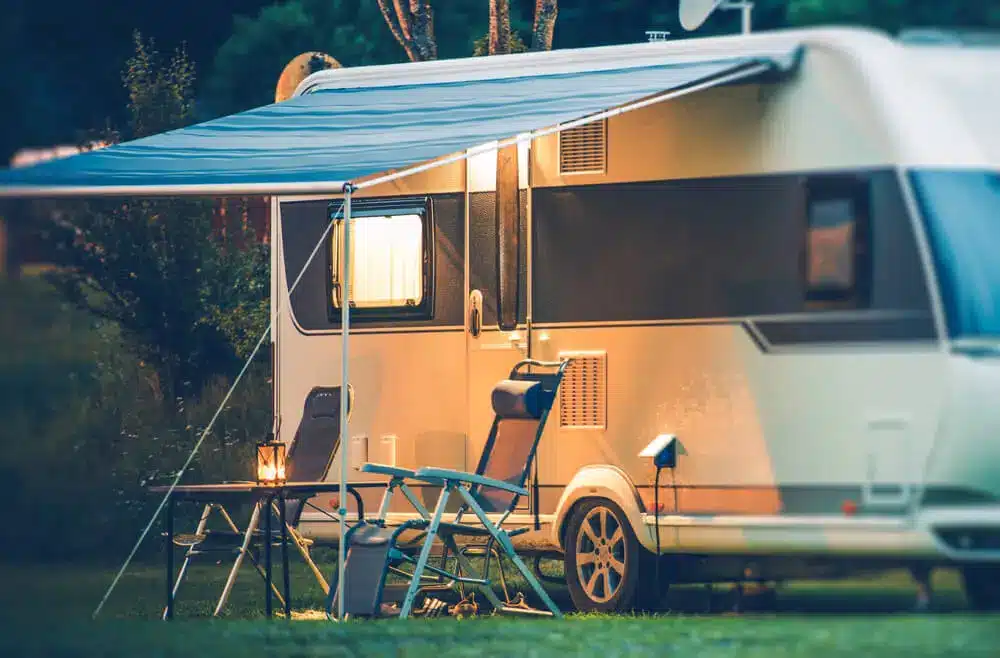
An RV awning adds comfort and convenience to any trip, providing shade and protection from the elements. Whether you’re looking to upgrade an existing setup or install a new one, selecting the right style and material makes a significant difference in durability and functionality. Brands like Carefree of Colorado offer a range of options suited to different needs, making it easier to find the perfect fit for your RV.
Types of RV Awnings
RV awnings come in various styles, each designed to serve a specific purpose. Understanding the differences helps in making an informed decision.
Retractable Awnings
These are among the most popular choices due to their versatility. They can be extended or retracted as needed, making them convenient for those who want flexibility. Motorized versions allow for easy operation with the push of a button, while manual options require a bit more effort but are often more budget-friendly.
Fixed Awnings
For those who prefer a permanent shade solution, fixed awnings remain extended at all times. These work well for seasonal campers or those who use their RV in a stationary location. While they provide continuous coverage, they are not as adaptable to changing weather conditions.
Slide-Out Awnings
Designed to protect the slide-out section of an RV, these awnings prevent water, dirt, and debris from collecting on the roof of the extension. They help reduce maintenance needs and extend the life of the RV’s slide-out mechanism.
Window and Door Awnings
Smaller than standard awnings, these provide shade for windows and doors, reducing interior heat buildup and offering additional protection against rain. They enhance comfort inside the RV, especially in warm climates.
Choosing the Right Material
The material of an awning influences its durability, maintenance, and overall performance. Selecting the best option depends on how and where the RV is used.
Vinyl Awnings
Vinyl is a common choice due to its resistance to mildew and UV damage. It’s waterproof, making it ideal for areas with frequent rain. However, it can become brittle over time if exposed to prolonged sun exposure without proper care.
Acrylic Awnings
Acrylic fabrics allow for better air circulation, reducing heat buildup underneath. They are water-resistant rather than fully waterproof, which means they dry faster and are less prone to mold. This material is well-suited for warm, dry climates where airflow is a priority.
Factors to Consider When Selecting an Awning
Several factors should be weighed when deciding on an RV awning, including ease of use, durability, and intended usage.
Ease of Operation
Manual awnings are typically more affordable but require physical effort to extend and retract. Motorized versions offer convenience but may need a power source and additional maintenance.
Weather Resistance
The climate where the RV is primarily used plays a role in choosing the right material and style. Areas with high winds might require reinforced frames or wind sensors on motorized awnings that retract automatically during strong gusts. If you’re RVing in regions like Florida, where the weather can be unpredictable, it’s also smart to consider insurance options—learn more about RV coverage tailored to the Sunshine State.
Size and Coverage
Larger awnings provide more shade and protection, but they also require more space when extended. Measuring the available area ensures that the awning fits properly without obstructing doors or windows.
Maintenance Requirements
Different materials require varying levels of upkeep. Vinyl may need occasional cleaning to prevent mildew, while acrylic benefits from regular brushing to remove dirt and debris. Proper care extends the lifespan of the awning and keeps it looking new.
Enhancing Your RV Experience with the Right Awning

A well-chosen awning enhances comfort and functionality, creating a more enjoyable outdoor space. With options available in different styles and materials, there’s a perfect solution for every RV owner’s needs. By considering factors like weather resistance, ease of use, and maintenance, finding the ideal awning becomes a straightforward process, ensuring a better travel experience with every journey.
- 0shares
- Facebook0
- Pinterest0
- Twitter0



